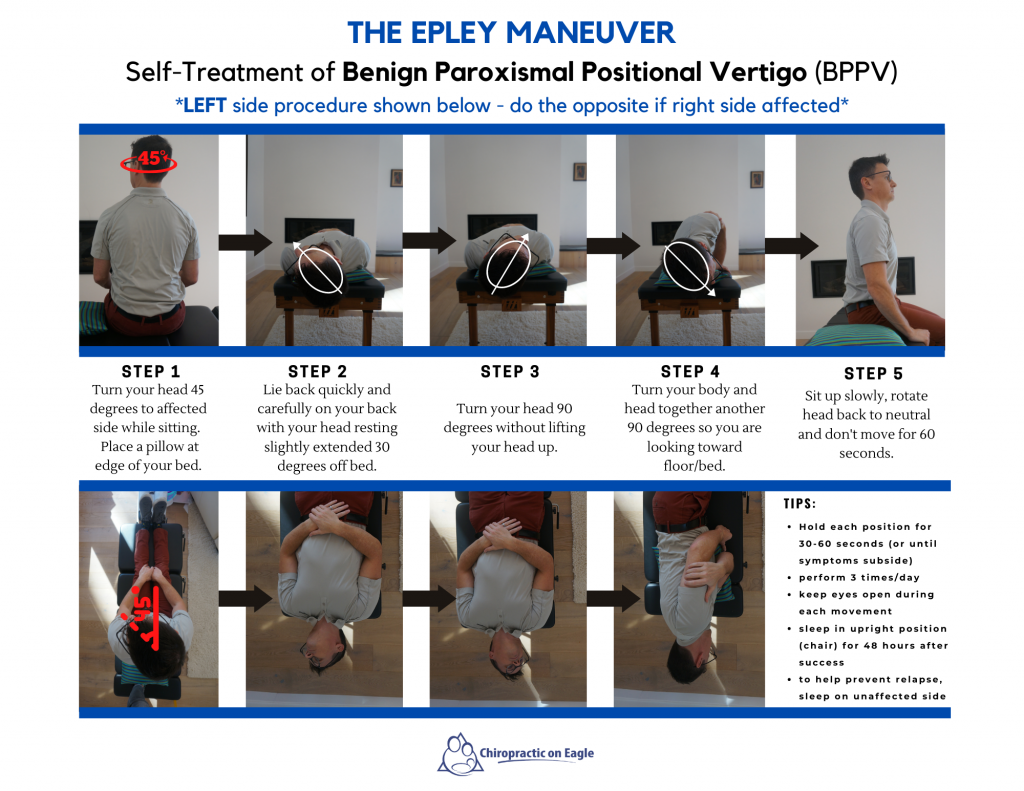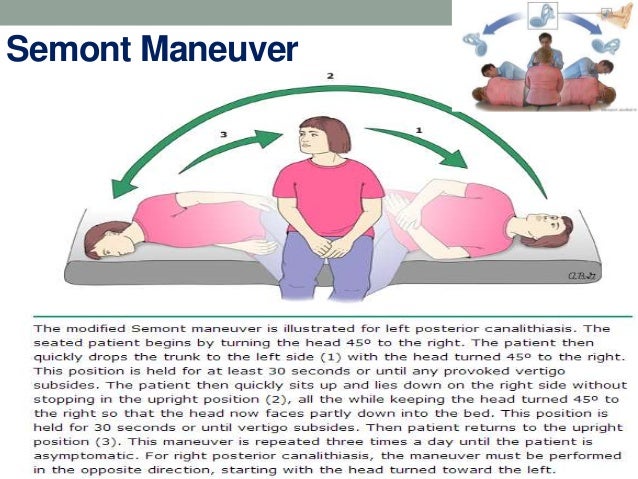

Do this so you are looking at that elbow.

It literally rolls the rocks out of your canals and back. This takes them out of the semi-circular canals in your ears and back to where they should be. It is a procedure that attempts to restore the otoconia to their natural position. Carol Foster, who is a sufferer of vertigo herself. The Half Somersault Maneuver is an exercise devised by Dr. HOW DOES THE HALF SOMERSAULT MANEUVER HELP?

If you turn your head while sitting or standing, severe dizziness can ensure here too. The dizziness is extreme, although it is short-lived. If this is the side with the dislodged otoconia, you’re in trouble. However, the most severe episodes occur when rolling over to one side in bed. WHEN IS VERTIGO MOST LIKELY TO OCCUR? Many people experience mild vertigo when standing up from a prone position. Since the semicircular canals are being stimulated, your brain interprets the incoming signals as a sign that you are spinning violently when in fact you are completely still. Your body starts receiving balance signals that make no sense at all. When the otoconia fall into them and touch the little hairs lining the insides of these canals, all hell breaks loose. These parts, called the semicircular canals, are responsible for the sensation of turning. Vertigo happens when these rocks get knocked out of their positions and enter parts of your middle ear. Since it doesn’t rely on sound, it also means that deaf people can still keep their balance, although it is a little harder to do so. The signals generated by these rocks as they fall are what keep you balanced and coordinated. They sense the pull of gravity and move with it. These are tiny rocks of calcium carbonate in your inner ear. This doesn’t happen through sound but through otoconia. If you took biology in school, you know that your body uses your ears to balance itself.
Vertigo maneuver how to#
To learn how to treat vertigo, you need to understand how and why it happens. The Epley maneuver is miraculous and works very well indeed. At the end of this, there is an 80% chance that your vertigo will be cured. The doctor then turns your head in different directions, changes your position, and does some other complicated steps. The doctor will then drag you back so that your head hangs over the edge of the bed.

You’re required to lie down, turn your head towards the side that experiences vertigo and wait. It is performed by a trained doctor, usually an ENT specialist. The Epley Maneuver is the most popular treatment method for vertigo BPPV today. TRADITIONAL BPPV TREATMENT: THE EPLEY MANEUVER However, the half somersault maneuver is a relatively new invention by Dr. The treatment of vertigo can be done in many ways-one of the most common of which is the Epley maneuver. It can, however, make life very uncomfortable for you. It is not a fatal condition, nor is it debilitating in any way. Millions of people have benign paroxysmal and have to deal with it every day. However, Benign Paroxysmal Positional Vertigo (or BPPV), is the most common form of this vertigo and dizziness. There are many problems that may cause vertigo and dizziness, such as vestibular migraines, a head injury, vestibular nerve damage or other vestibular disorder, hearing loss, inner ear damage, motion sickness, and many others. Vertigo is the name given to the sensation of vertigo dizziness where you feel like the room is spinning around you. In the US alone, millions of people suffer from vertigo. Read about dietary choices that treat vertigo -> See our post about best exercised for vertigo ->Įxplore essential oils as treatment for vertigo -> Check our list of best remedies for vertigo ->


 0 kommentar(er)
0 kommentar(er)
